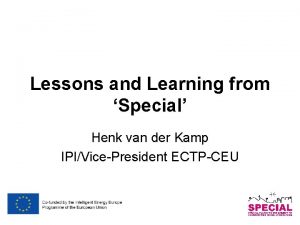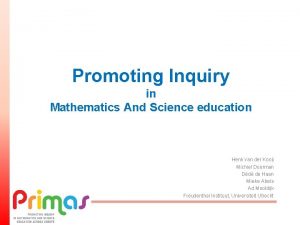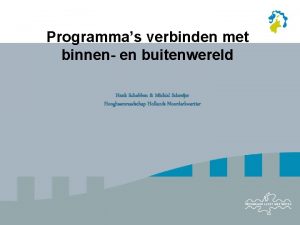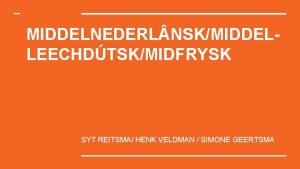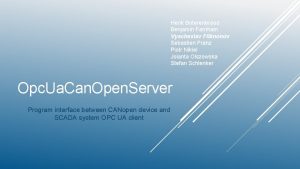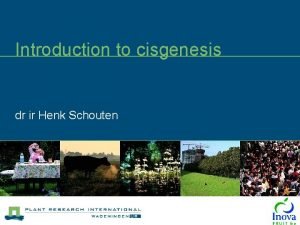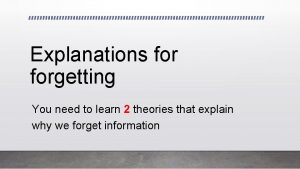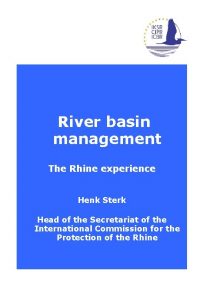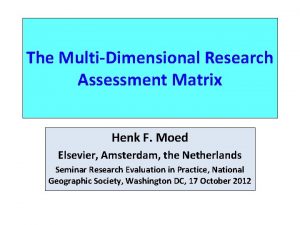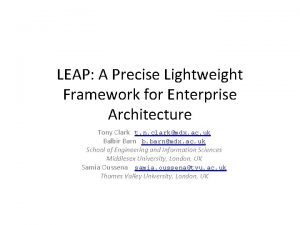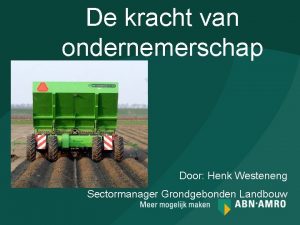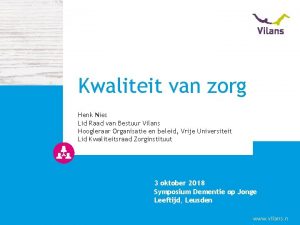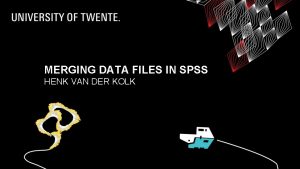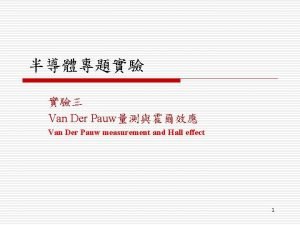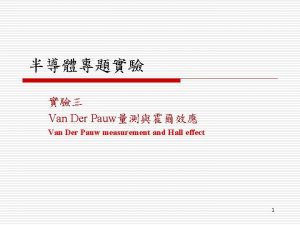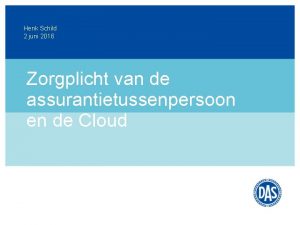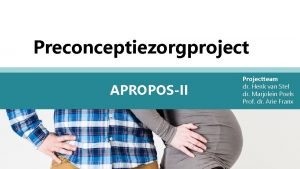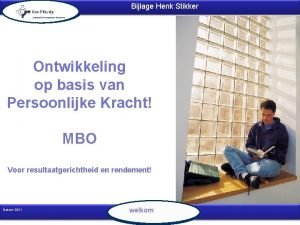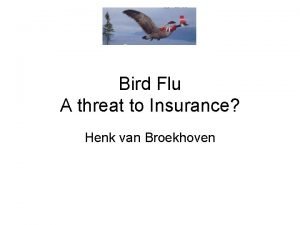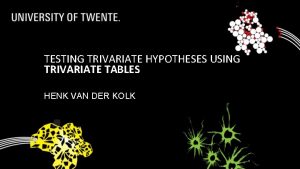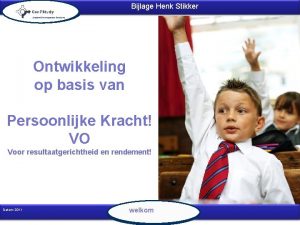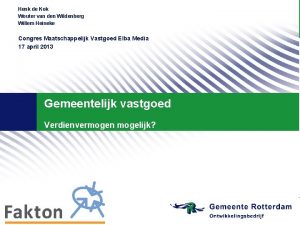Lessons and Learning from Special Henk van der


















- Slides: 18

Lessons and Learning from ‘Special’ Henk van der Kamp IPI/Vice-President ECTP-CEU

SPECIAL • Spatial Planning and Energy for Communities in All Landscapes • European project with IPI as a partner • Thermie B: wind energy and planning (1995) • IPI full partner • ECTP-CEU also involved: Planning awards and pan-European Guide

About ECTP-CEU • European Council of Spatial Planners • Network of Town Planning Institutes across many European countries. • Network of planning professionals • Example of previous guide: Try it this way. • www. ectp-ceu. eu

The Purpose of the Guide • Energy use reduction and reduction of fossil fuel use • Practical for planners and informed lay persons • Spatial scale always relevant • Local conditions always relevant • Combined use with Knowledge Pool: www. special-eu. org

Format • • Ten themes: no order of importance Themes reflect ‘key planning principles’ Brief description of each theme Three ‘objectives’ (what do we seek to achieve) • Ten ‘recommendations’ (how to achieve) • Two case studies from the Special project

1 Urban Structure • Land use patterns change slowly • Objective: Integrate waste, energy generation, distribution and reduced energy demand from transport • Recommendation: Adopt a compact urban form to achieve higher densities and reduced energy demand. • Case: South Dublin Spatial Energy Demand Analysis for urban policy-making

2 Masterplanning • New development areas = opportunities • Objective: To seize opportunities at the initial planning phases of development. • Recommendation: Achieve collaboration between different groups of specialists. • Case: Strategic Masterplanning for Energy, Geneva

8 Zero Carbon • Buildings can be energy neutral • Objective: Define zero and low carbon standards in planning policy documents for all buildings • Recommendation: Adopt ambitious targets supported by political commitment at local level • Case: Hannover zero: e Park, Germany

4 Community • People not technology is central • Objective: Community to be the owner and beneficiary of energy production • Recommendation: Work with communities to achieve community based energy production schemes • Case: Gamlingay Eco Hub, Cambridgeshire

5 Preferred Sites • Planning seeks optimisation • Objective: Locate energy related developments based on overall benefit for society • Recommendation: Reserve suitable locations for specific infrastructure (e. g. wave technology or hydro-electricity schemes) • Case: Local Development Orders to facilitate the delivery of renewable energy in Swindon

6 Energy Production • Energy as a land use category • Objective: To maximise all opportunities for renewable energy generation in a local and/or regional area. • Recommendation: Use other land uses where possible as energy generating facilities (e. g. rooftops for solar energy) • Case: Hannover Solar Cadastre

7 District Heating • Cooling as well as heating • Objective: To apply the concept at the right scale, time and with full community participation • Recommendation: Identify heat demand map identifying key constraints and network development opportunities • Case: Brescia, the district heating network

8 Brownfield • Bad sites can become good sites • Objective: To use high profile brownfield sites • Recommendation: Include energy production and energy distribution as key parameters in urban regeneration policies • Case: Hamburg Energy Hill and Energy Bunker, Germany

9 Mobility • Zero energy travel not (yet) realistic • Objective: To reduce the overall demand for travel • Recommendation: Achieve co-location or proximity of related land uses • Case: Sustainable Urban Mobility Plan City of Judenburg, Austria

10 Green & Blue • Water and trees can help us • Objective: To provide blue and green spaces as a means to maintain a correct urban microclimate • Recommendation: Avoid ‘sealing’ of all surfaces • Case: Graz courtyards in the city

IPI, ECTP and Europe

Lessons Learnt • Spatial planning important: both mitigation and adaptation • Practical advice to planners is helpful • IPI can deliver on European projects • European exchange of best practice is essential

Conclusions • • Easily understood concepts Creative thinking Out of the box solutions Potential contribution of spatial planning ‘Common good’ central at all times ‘Community’ central at all times Win-win solutions Create curiosity: Knowledge Pool
